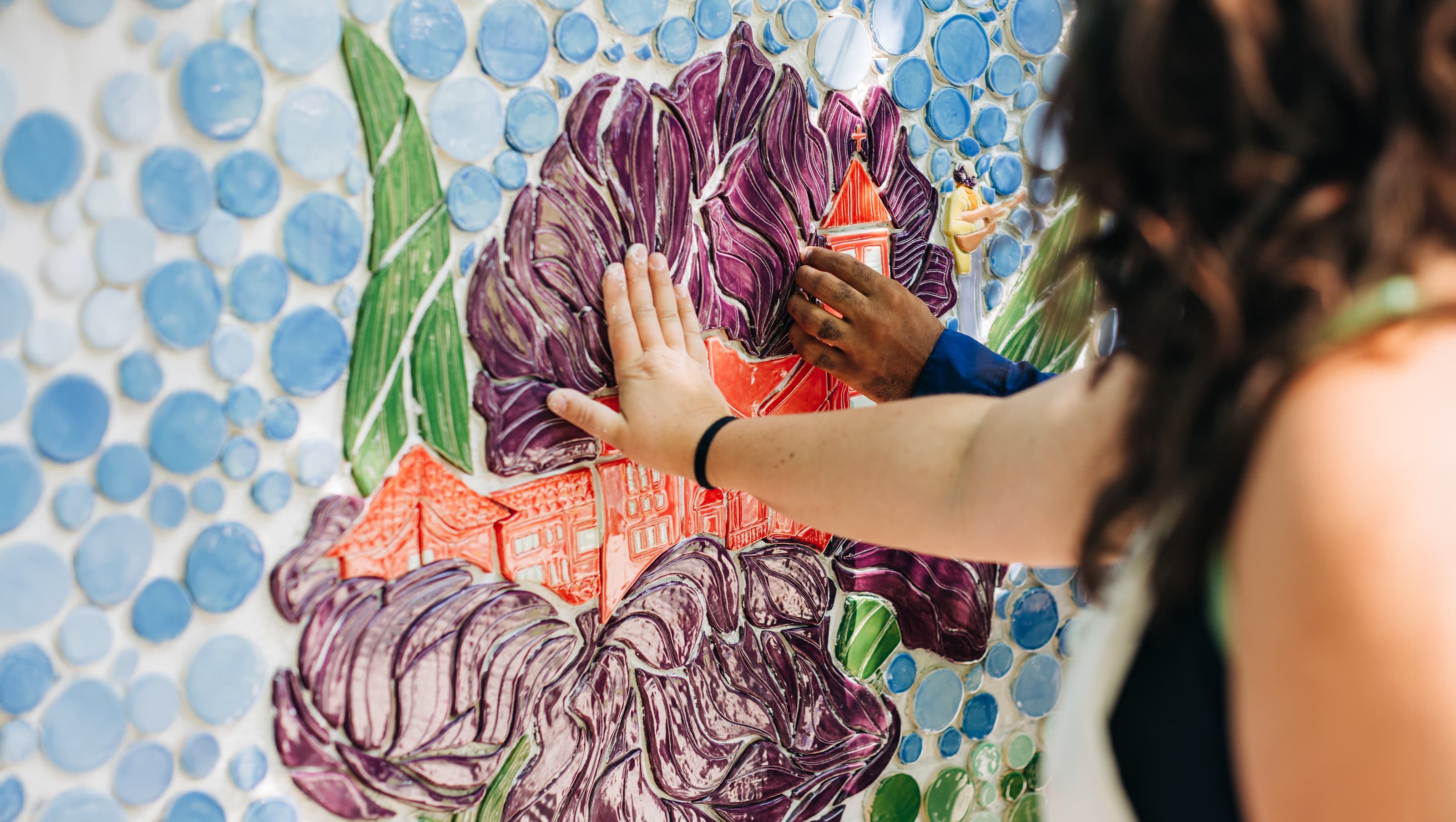
Enhance Your Art Experience
You’ve arrived at the heart of this project. The Multisensory Public Art for Clifton installation is more than a mosaic, it’s an invitation. Each tile, texture, and sound is designed to engage your senses, spark your curiosity, and connect you to the neighborhood’s rich history.
This page offers a guided experience with an audio tour, a tactile wall walkthrough, and reflection tools designed to deepen your visit. Whether you’re exploring solo, with a group, or using a screenreader or mobility aid, you are welcome here.
How to Begin
- Start by listening to the audio tour. We recommend using headphones for an immersive experience.
- Move at your own pace. You can pause and explore each section as long as you like.
- For tactile engagement, we suggest: listen first, then touch. Take your time between stops.
- Benches nearby invite you to site, listen, and reflect. You don't have to rush.
- Scroll down to see the details of key tiles below and their meaning.
Looking for Accessible Materials?
You can download a full audio transcript and a tactile activity guide using the buttons above. The audio tour is narrated by Disability & Inclusion Specialist, Darren Harbour. Darren served an essential guide in our journey of creating a welcoming and accessible experience for all.
See the Details up close
Beargrass Creek
A family of indigenous people row a canoe on Beargrass Creek. A mother holds a small child in the canoe and rows with the other hand while a father rows in the back of the canoe. They have long, flowing hair. Wildflowers can be found scattered throughout the green grassy circular tiles across the installation, each with its own wish or meaning. Red-orange marigold for creativity; yellow-green daffodils for new beginnings; orange and yellow dandelion for growth; violet coneflower for health.
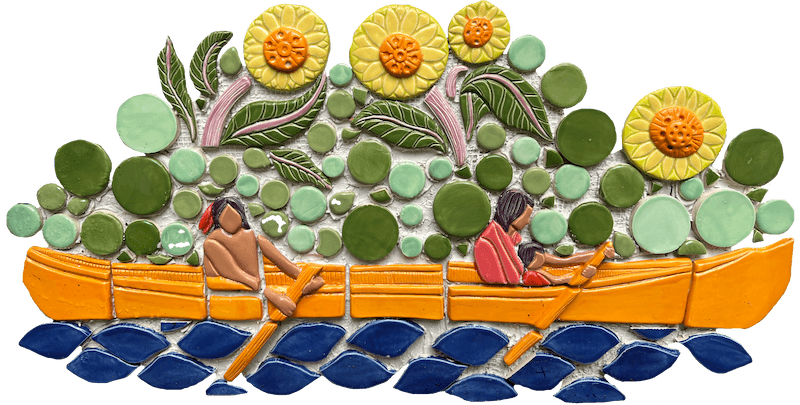
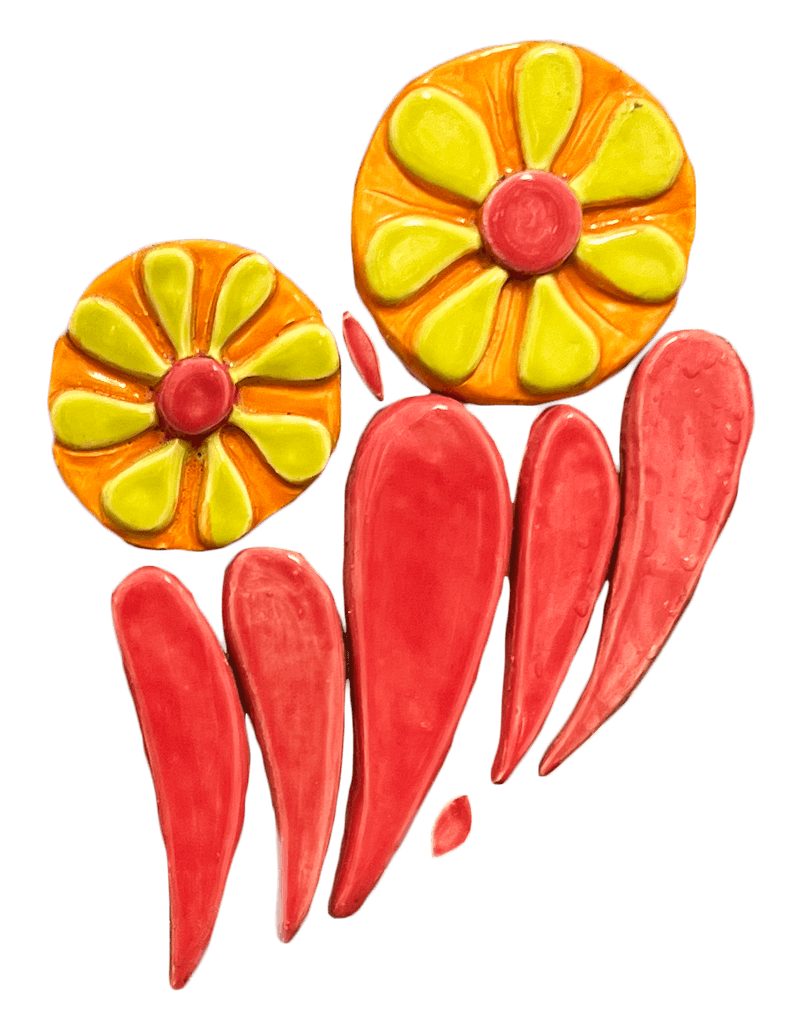
The Goldenrod
The sprawling goldenrod plant fills the focal point and height of the installation. Army green stalks with lighter green leaves weave their way upward toward the sky. Circular discs containing smaller flowers in lime green and orange are supported by coral, teardrop-shaped buds. Goldenrod is the state flower and a symbol for growth and encouragement. Five branches of goldenrod spread out to contain three buildings, and three scenes related to the Kentucky School for the Blind.
The original School for the Blind building
The center stalk of the goldenrod contains the massive relief sculpture of the original School for the Blind building, built in 1855 on what was then called Frankfort Turnpike Road. It was demolished in the 1960’s, but the original cupula Richter sculpted at the top of the dome is still viewable on the grounds of KSB. The building was a five story structure in the Greek Revival style, with an entrance portico, a large copper dome and a small dome on either side, each with a cupola above it. Richter glazed the KSB building in creamy white with a green dome, similar to what she found in historic photos and illustrations. This building was used as a hospital during the Civil War.
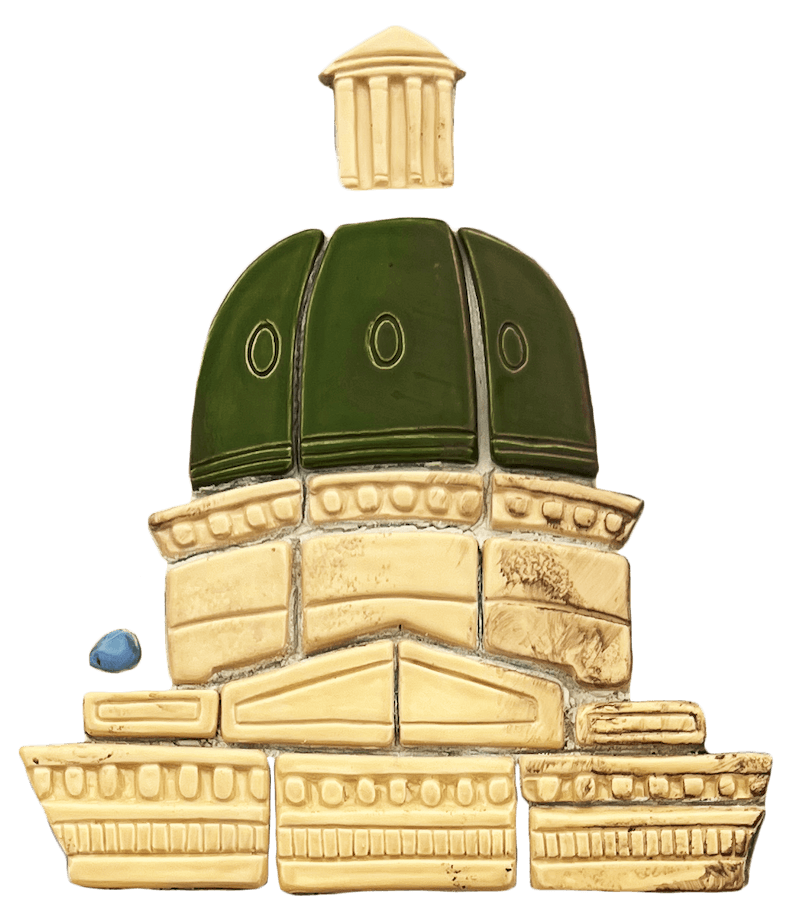
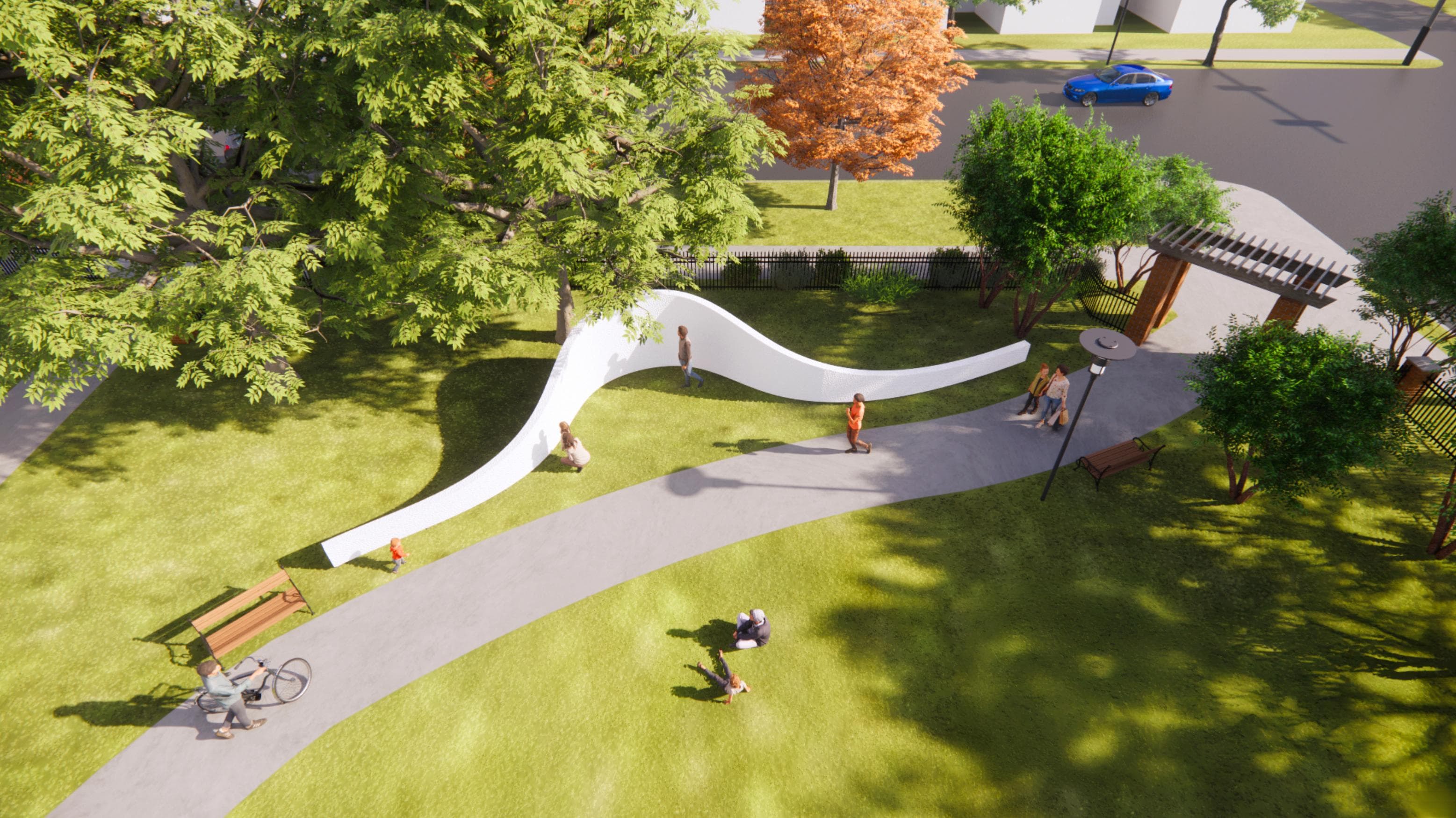
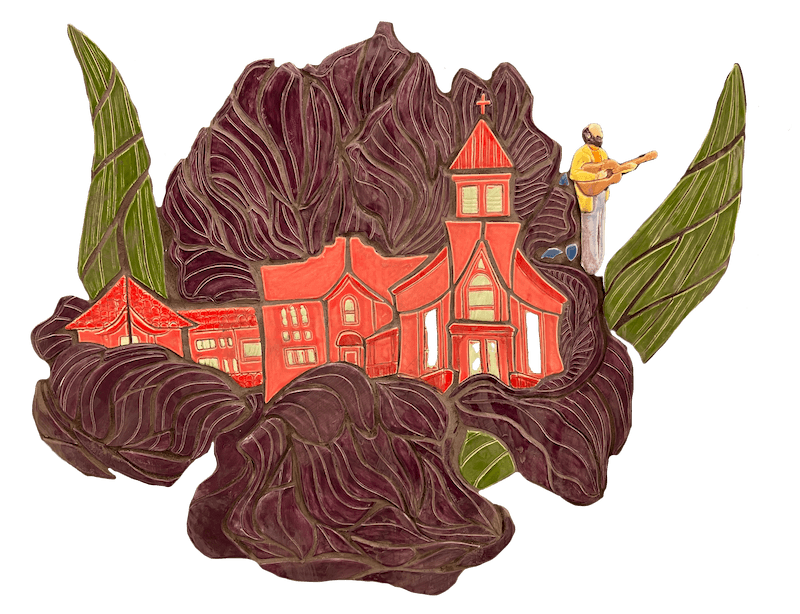
The Clifton Center
A tall, wavy iris plant is positioned nearly five feet tall in its entirety. Inside this blossom, a symbol of eloquence, rests the building known as the former “Clifton Center.” The Clifton Center is an extension of the historic St. Francis of Rome church, and a former hub of the creative community.
The Irish Rover, formerly Widman’s Saloon
The last building, now a restaurant known as the Irish Rover, formerly Widman’s saloon in the 19th century. The saloon was a watering hole and is still a beloved dining spot. The building is glazed in warm red-orange and yellow, with six windows and seven pillars across the front. It is surrounded by petite hydrangea blossoms (a symbol of nourishment) in pink, with blue centers, large green leaves and yellow-green stems.
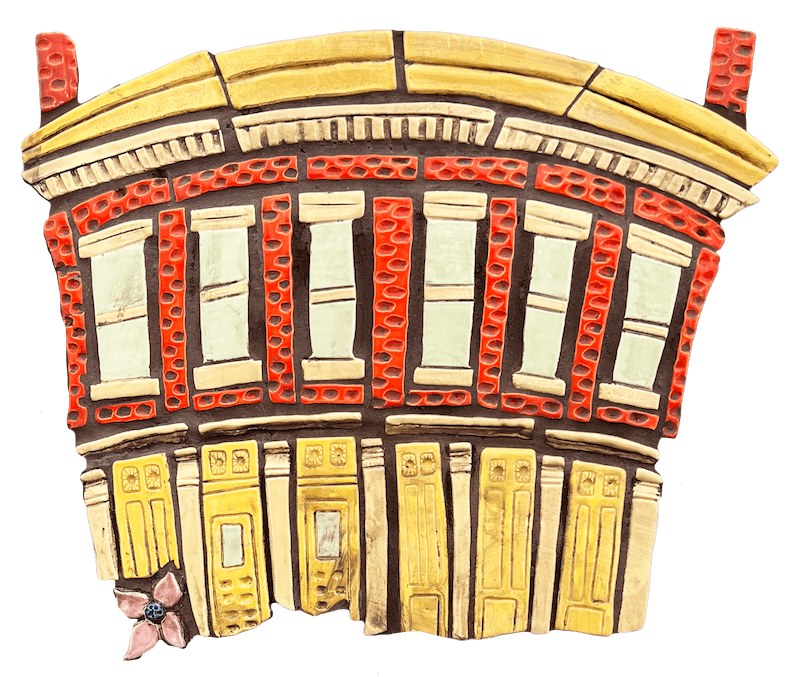
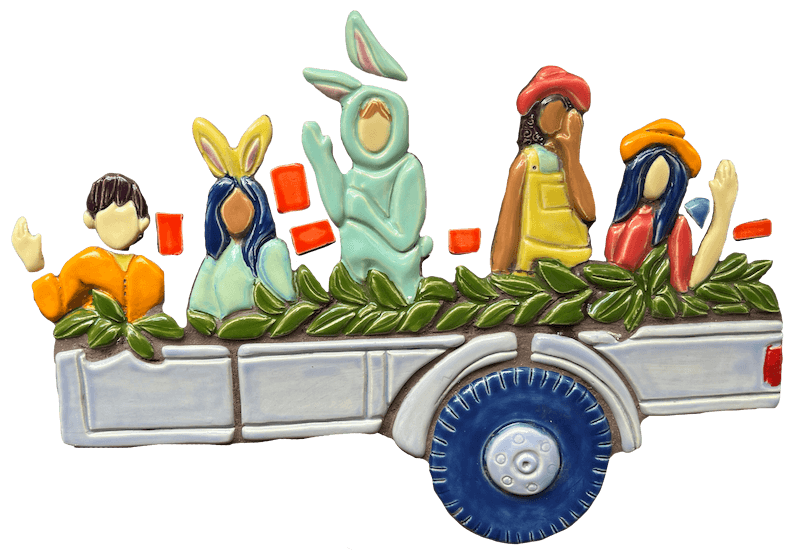
The Easter Parade
A white truck pulls a trailer with five people riding on it. One is in an Easter Bunny costume and others wear easter hats or bunny ears. They are waving and throwing candy as they ride on the float covered with greenery. The Easter Parade is an annual event on Frankfort Avenue. Richter modeled the float off of a family float from 2022 and her art truck, her “studio on wheels.”

Resources For Visitors and Educators
Free information resources available by download

YouTube Audio Playlist
Explore every chapter of the audio guide on Youtube. Great for visitors who want to self-direct their journey at their own pace, learn or revisit what they heard on-site.
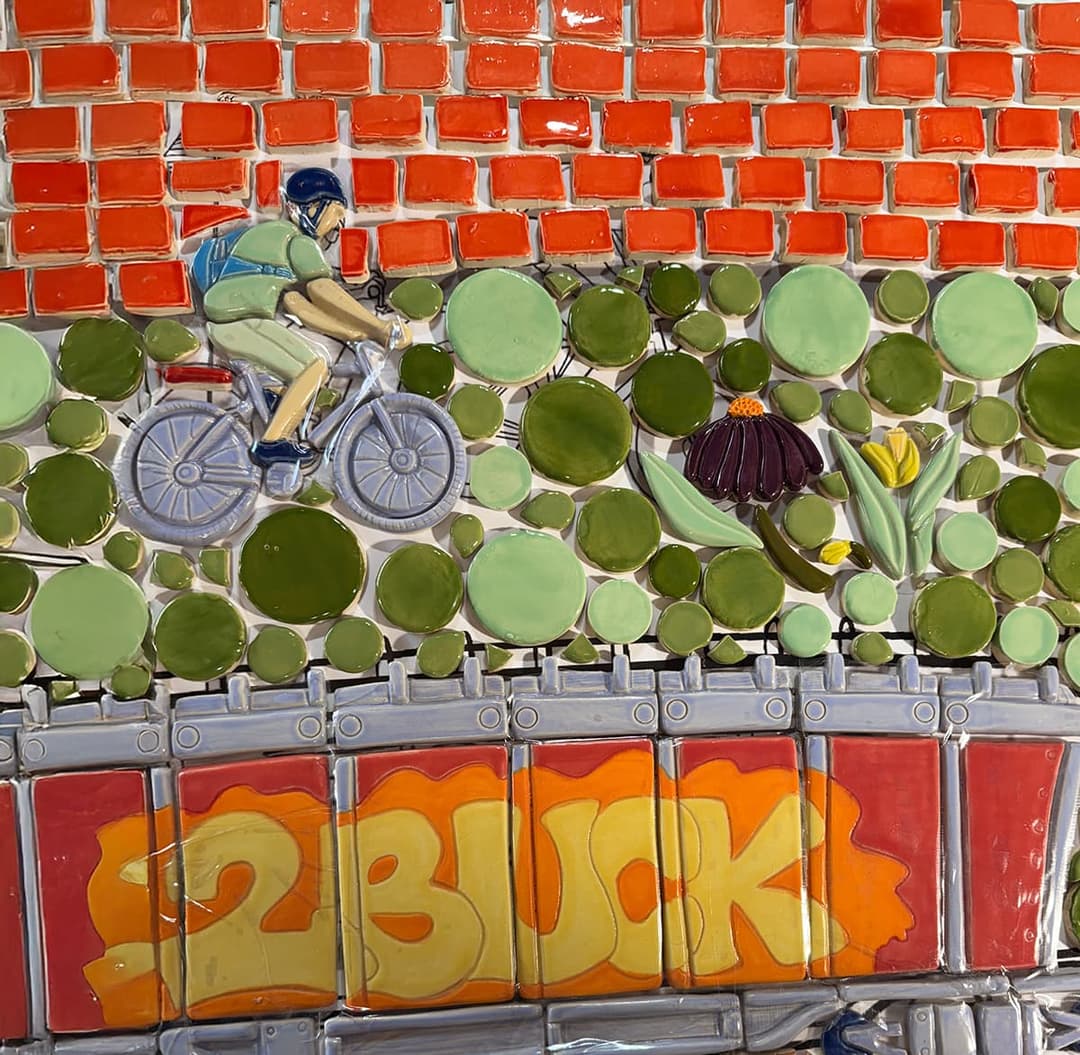
Teacher/educator activity guide
Curious about how you could integrate this art installation into your classroom learning? Check out suggested topics and lesson ideas.

Share what you felt
We would love to hear about your experience at the Clifton Multisensory Art Installation. It is our goal to maintain an inclusive public art installation that can be experienced by all. We hope that this artwork inspires more artists to create accessible public art around the country, and your feedback will help inform future projects.